

See below for definitions of key terms used in the exhibition and more information about specific areas of the exhibition.
VOCABULARY
History of CITIZENSHIP
Chicago POLITICS
Polish American ATHLETES
SAVE OUR JOBS COMMITTEE
SWIERKOSZ FAMILY



VOCABULARY / SŁOWNICTWA / VOCABULARIO
Wycinanki (“vee-chee-non-kee”) – Wycinanki is the Polish word for “cut-paper design.” Polish peasants traditionally decorated their cottages with colorful Wyciniaki, which often depicted scenes from daily life, such as weddings or holidays. As you go through the exhibition, look for wyncinanki motifs, such as in the entryway and on exhibition panels.
Commonwealth – An independent country or community, especially a democratic republic.
Polish Lands – Those areas of Eastern Europe that were once part of the Polish-Lithuanian Commonwealth, which existed from 1569 to 1795.
Napoleonic Wars – Wars fought after the French Revolution from 1803 to 1815 under the leadership of French Emperor Napoleon Bonaparte. The Napoleonic Wars reshaped Europe and led to the development of nationalism. After Napoleon’s defeat, the victorious allies led by Russia and Great Britain redrew the continent’s map to reflect new political realities.
Congress Poland – The Kingdom of Poland established under Russian control at the Congress of Vienna in 1815.
Displaced Persons – People displaced by World War II. Allied troops liberated more than ten million enslaved laborers, prisoners of war, and concentration camp survivors on German soil. Many felt they could not return to their original homelands now ruled by Communist governments. After 1946, Displaced Persons, including hundreds of thousands of Poles, immigrated to the United States.
Communism – a political theory derived from Karl Marx advocating class war and ideally leading to a society in which all property is publicly owned, and each person works and is paid according to their abilities and needs. The term “communist” is also used to describe governments that have a centralized state government run by a single party.
Soviet Union/Soviets – The Union of Soviet Socialist Republics, an outgrowth of the Bolshevik Revolution of 1917, was a transcontinental country that spanned Eurasia from 1922 to 1991. After World War II, the Soviet Union imposed a communist regime on Poland from 1947 until 1990. The Soviet Union has since been replaced by the Russian Federation.
Home Army (Armia Krajowa or A.K.) – The A.K. was formed in 1942 from Polish resistance forces in the struggle against the German Nazi occupation of Poland. It became one of the largest underground resistance movements in Europe during World War II. Loyal to the Polish government in exile in London, the A.K. led the Warsaw uprising in 1944 against the Nazis, in which the Soviet Army refused to come to its aid resulting in the defeat of Polish forces. After the war, many A.K. veterans were harassed, imprisoned, or killed by the Communist regime imposed by the Soviet Union.
Solidarity – The Polish Trade Union founded in August 1980. Lead by Lech Wałęsa, it helped to overthrow the Polish Communist regime in 1990.
Polonia – The name used to describe the Polish diaspora, used in Chicago primarily by Polish Catholics.



History of Citizenship / Historii Obywatelstwa / La Historia de Ciudadanía
Poradnik oraz słowniczek polsko-angielski i rozmowy polsko-angielskie, Bank Polski, Chicago, 1907
Chicago History Museum, ICHi-182700
Stanisława “Stella” Betczynski’s composition book used for citizenship test practice, c. 1941
Stanisława “Stella” Betczynski, Chicago, n.d.
South Chicago Citizens Club citizenship questionnaire, c. 1941
Courtesy of Marlene Magon
This guide (left) helped Polish immigrants study for the citizenship test. When it was made, local courts controlled the testing process, not the federal government like today. Stanisława Siutkowska was born in Światniki in the Russian partition of the Polish lands. She came to Chicago in 1913 with her husband Józef Betczynski and lived in South Chicago. She used this composition book (right) to prepare for the citizenship test while taking classes from the South Chicago Citizens Club. Walter S. Bednarksi, an attorney, led this club, which sometimes met at the Bessemer Park Fieldhouse on the Southeast Side. Stanisława used this list of questions (center) to study for the test and became a citizen in the 1940s.
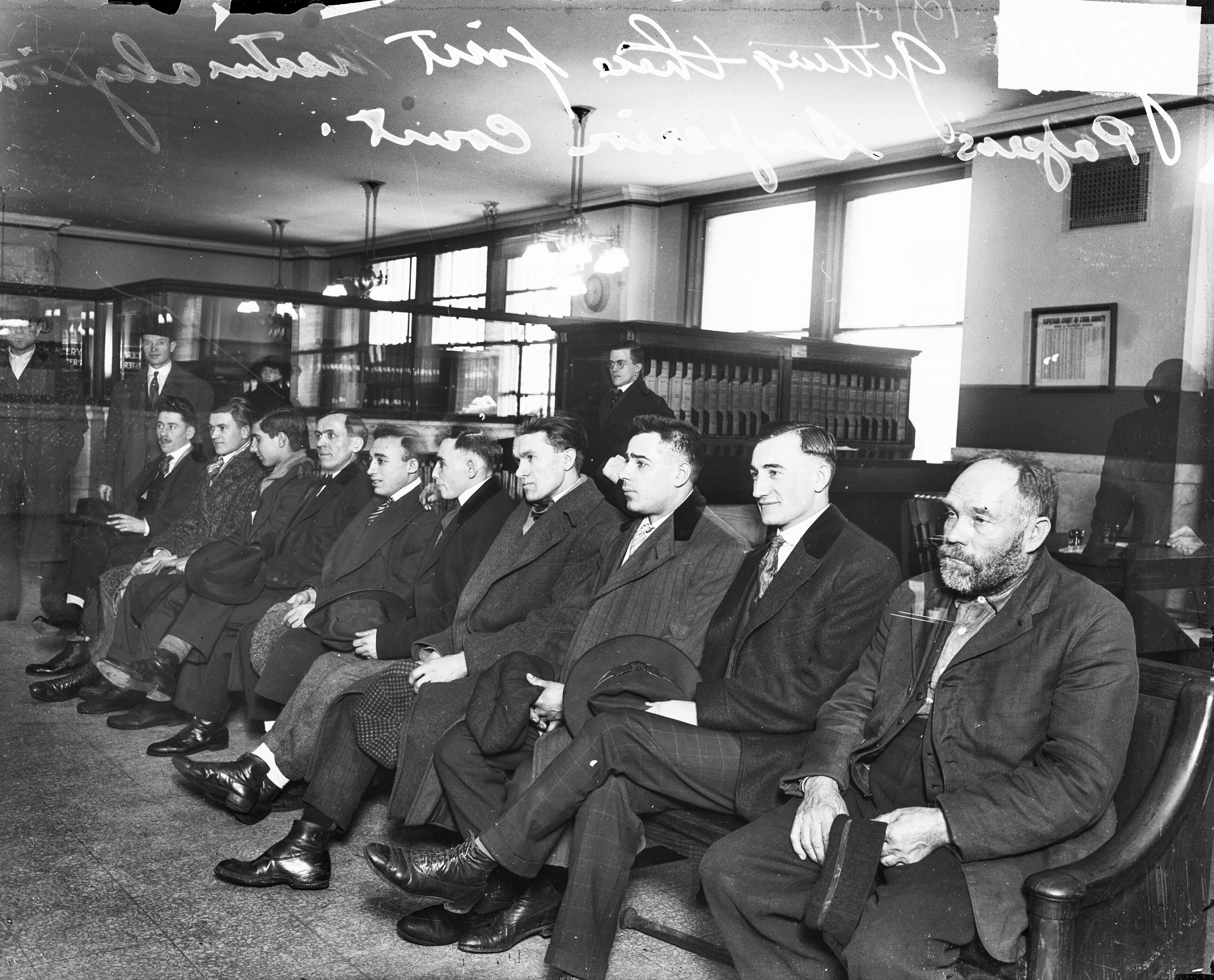
Immigrant men, sitting in a row, in the Superior Court on the 4th Floor of the County Building at 118 N. Clark Street, Chicago, 1917. DN-0067734, Chicago Daily News collection, Chicago History Museum



Chicago Politics / Polityce w Chicago / Política de Chicago
Judge Aurelia Pucinski celebrating victory in the election for Clerk of the Circuit Court of Cook County with father Roman Pucinski (left), Chicago, 1988
Photograph by and courtesy of Mark Dobrzycki
Roman Pucinski mayoral candidacy pamphlet, Chicago, 1977
Chicago History Museum, ICHi-182718-001
Roman Pucinski, then a member of the City Council, ran for mayor in the special election Democratic primary using flyers like this one. Acting Mayor Michael Bilandic won the primary and the general election. Future Mayor Harold Washington also ran in this primary.
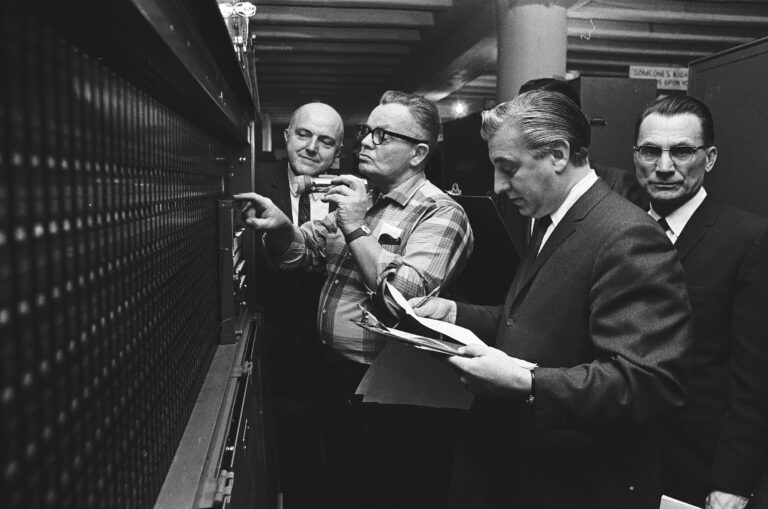
Alderman John Hoellen, Congressman Roman Pucinski, and others watching vote recount, Chicago, December 9, 1966. ST-13001511-0002, Chicago Sun-Times collection, Chicago History Museum

John F. Smulski city attorney election poster, Chicago, c. 1903 (top)
Labor Party candidates palm card, Chicago, 1919
Chicago History Museum, ICHi-182722 and ICHi-182716-001
Business leader and Polish immigrant John F. Smulski served in several positions in local government. He won this election for city attorney. Labor leader John Kikulski ran on the Labor Party ticket in 1919 for city clerk. Also a Polish immigrant, Kikulski organized Polish workers in the meatpacking industry.
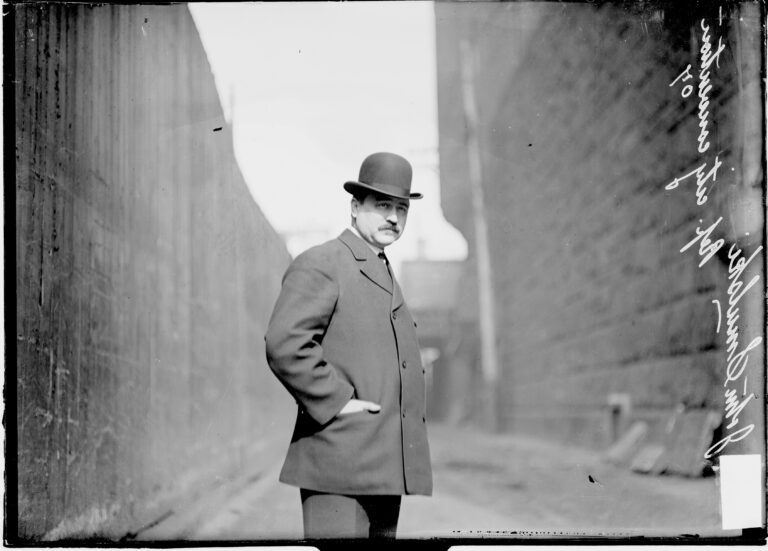
John F. Smulski standing outside the First Regiment Armory at 1542 S. Michigan Avenue during the Republican City Convention, Chicago, 1907. DN-0004730, Chicago Daily News collection, Chicago History Museum



Polish American Athletes / Polsko-Amerykańskich Sportowcach / Atletas Polaco-Americanos
Polish National Alliance Champs, baseball trophy, 1947
Polish National Alliance Chicago Champs, basketball trophy, 1951
Courtesy of the Polish National Alliance
The Polish National Alliance (PNA), among other organizations, hosts sports leagues and tournaments in Chicagoland and around the country. PNA national and local champs received these baseball and basketball trophies.
Baseball signed by A. J. Pierzynski, 2021
Chicago Blackhawks hockey puck signed by Eddie Olczyk, 2004
Courtesy of National Polish-American Sports Hall of Fame
Eddie Olczyk, whose father was from the Displaced Persons generation, began playing hockey at age six at the IceLand Skate Complex in suburban Niles. He began and ended his career (1983‒2000) with the Blackhawks. Former Chicago White Sox catcher A. J. Pierzynski helped lead the Sox to the 2005 Major League Baseball World Series title. Olczyk and Pierzynski signed this puck and ball, respectively, when they entered the National Polish-American Sports Hall of Fame.
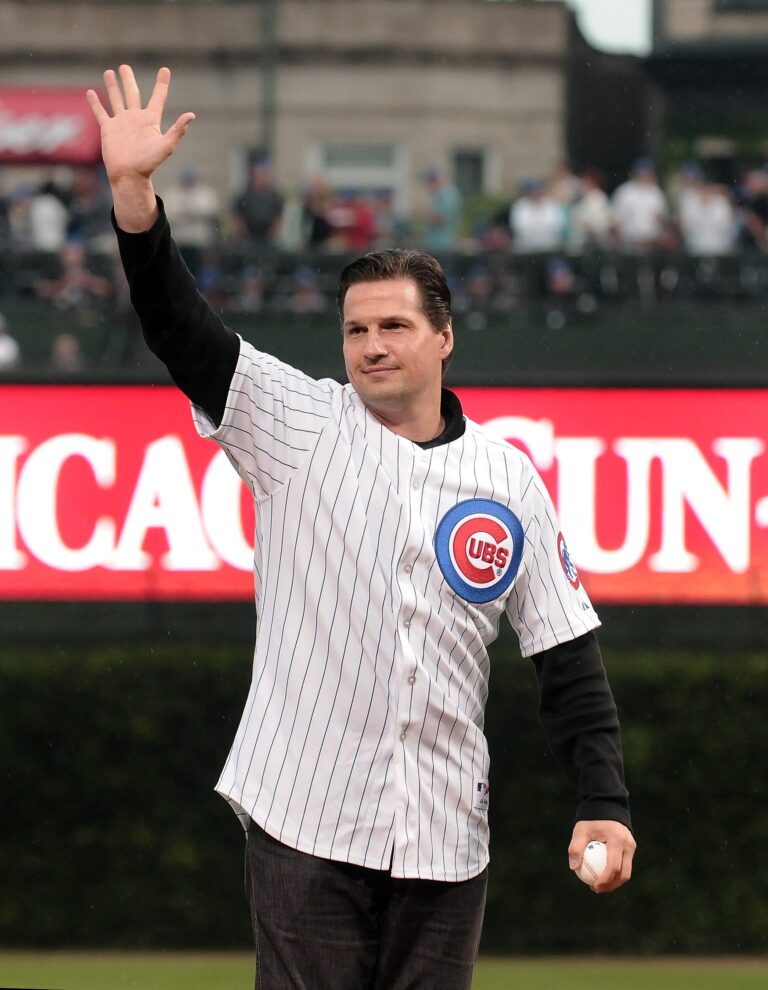
Eddie Olczyk throws out a ceremonial first pitch before the Chicago Cubs-Houston Astros game August 13, 2012 at Wrigley Field in Chicago. STM-028344585, Tom Cruze/Chicago Sun-Times
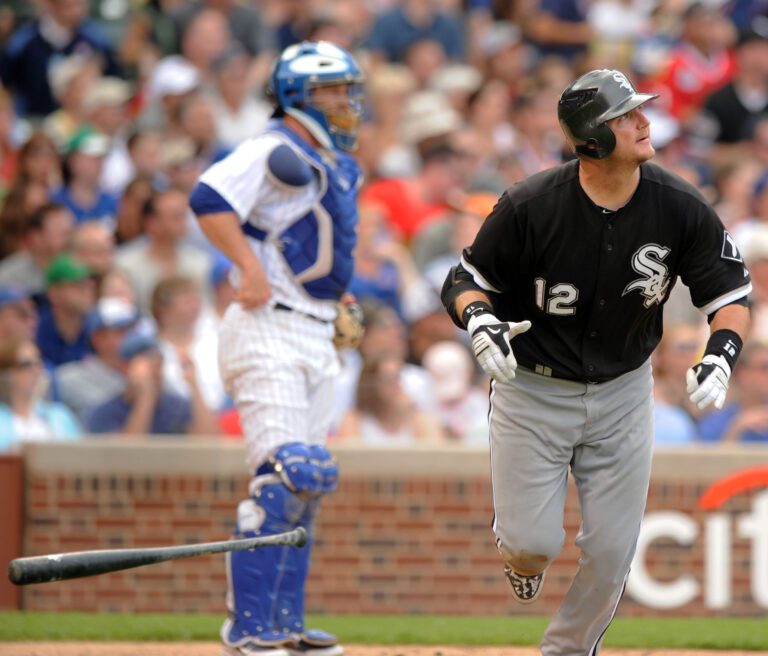
Chicago White Sox A. J. Pierzynski hits an RBI double in the 5th inning of the Cubs-Sox game at Wrigley Field, June 11, 2010. STM-016870433, Tom Cruze/Chicago Sun-Times



Save Our Jobs Committee / Komitecie Save Our Jobs / Comité Save Our Jobs
“Envirodyne, Pay the Wisconsin Steel Works” protest poster, Chicago, c. 1993
Collection of the Chicago History Museum, gift of Frank and Beatrice Lumpkin, 2003.254.5
Under the leadership of former Wisconsin Steel workers, Frank Lumpkin and Ed Sadlowski Jr., the Wisconsin Steel Save Our Jobs (SOJ) Committee formed in 1980. SOJ was a coalition of Polish American, African American, Mexican American, and other steelworkers and their families. Eventually, SOJ won two lawsuits against Wisconsin Steel’s parent companies, International Harvester/Navistar and Envirodyne. Money won in court helped pay for benefits that the steelworkers would have gotten had the mill stayed open.
To learn more about the Southeast Side’s steel mill closures, see “The Closing of the Mills” from the Southeast Chicago Historical Society.
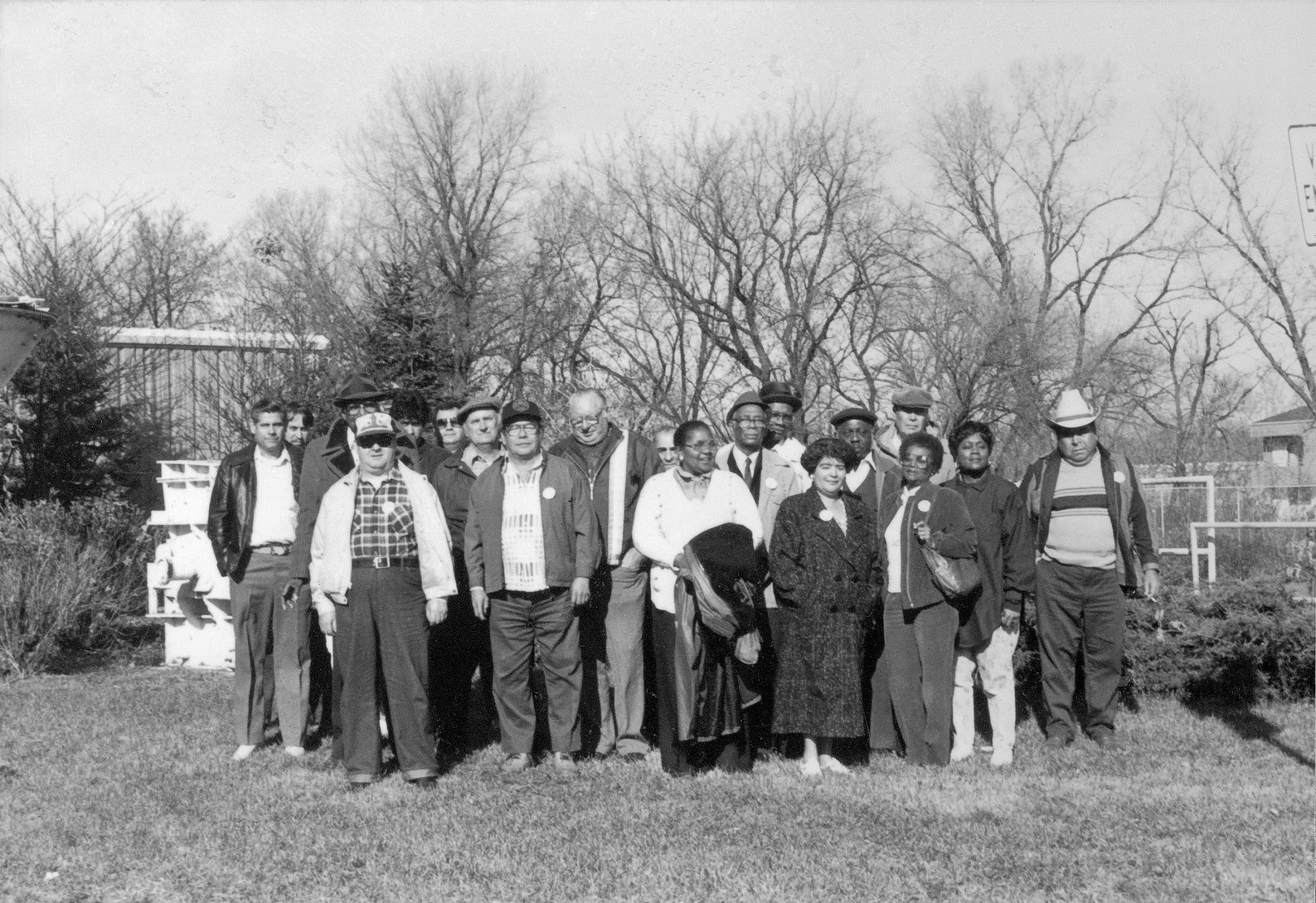
Save Our Jobs Committee, including Juanita Andrade and Frank Lumpkin and others, 1985. Chicago History Museum, ICHi-031930



Swierkosz Family / Rodzinie Świerkoszów / Familia Swierkosz
Andrew Swierkosz’s Bishop Francis Hodur Society ribbon, n.d.
Saints Cyril and Methodius church ribbon, n.d.
Courtesy of Cynthia Swierkosz Smolka
Rev. Francis Hodur of Scranton, Pennsylvania, established the Polish National Catholic Church (PNCC) and in 1907 became its first bishop. The PNCC rejected the authority of the pope and of the Roman Catholic hierarchy in America, which they regarded as dominated by the Irish and disfavoring the Poles. Father Francis Hodur became the PNCC’s first bishop in 1907. Polish immigrants Antonia and Andrew Swierkosz wore these ribbons while active in local PNCC parishes, including Saints Cyril and Methodius in the Belmont Cragin neighborhood. At their funerals, these ribbons were placed on their coffin lids.
